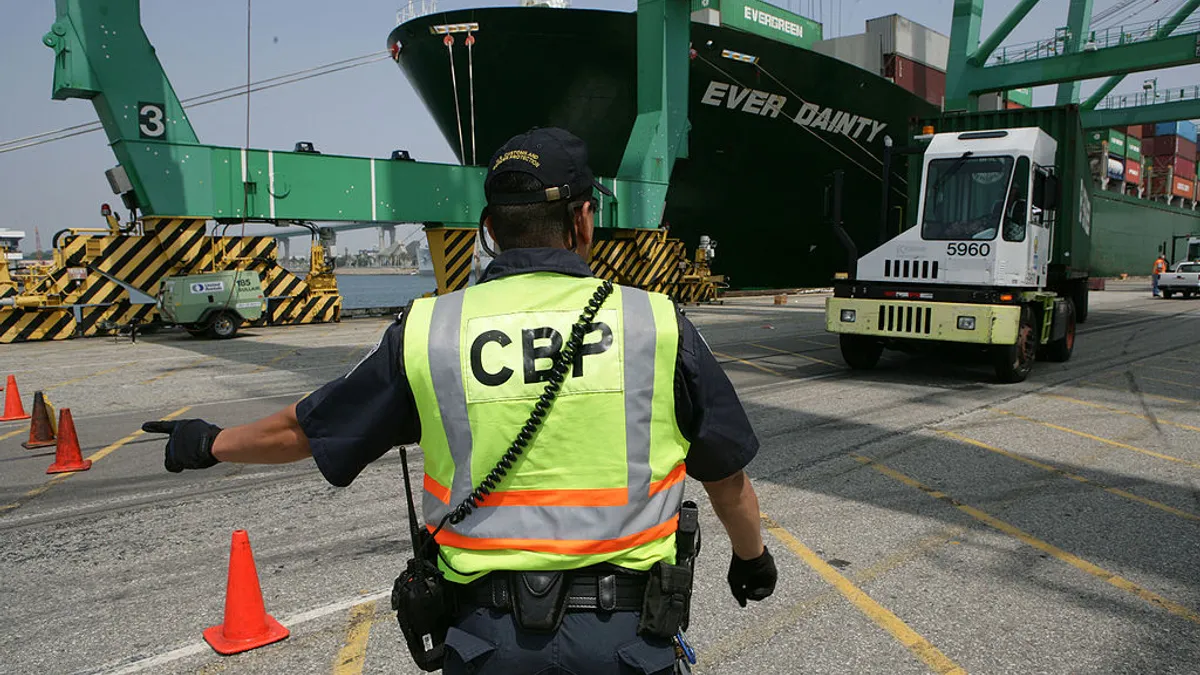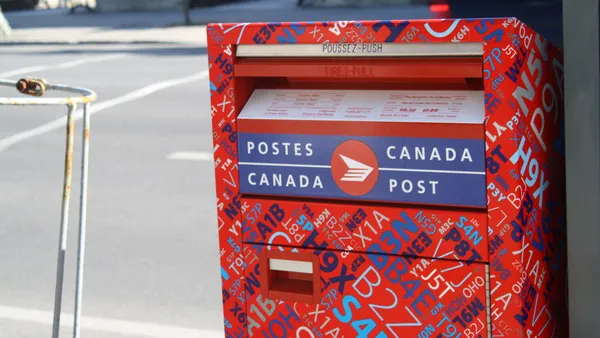Dive Brief:
- U.S. Customs and Border Protection and U.S. Immigration and Customs Enforcement seized 34,143 shipments of goods violating Intellectual Property Rights (IPR) in 2017, according to a press release.
- The seizure is an 8% increase from 2016 and the second year in row that CBP and ICE seized more than 30,000 shipments of counterfeits.
- According to a recent study from the U.S. Government Accountability Office (GAO), the circulation of counterfeit products has exploded with the e-commerce boom, which coincides with CBP's new effort to mitigate the influx of counterfeits sold on e-commerce sites.
Dive Insight:
E-commerce is forcing retailers, shippers and 3PLs to change their business models, but it has also facilitated an influx of new sellers and importers to the market and the rise of counterfeits — and now CBP is pressured to find a solution to the problem.
According to the Chamber of Commerce, USPS small parcel shipments increased 232% from 2013 to 2017. The Chamber claims "Each year, international counterfeiters ship more than $400 million worth of counterfeit goods to unsuspecting American consumers."
The Chamber also said that in a pilot program involving USPS and CBP, only 80% of "suspicious" packages were intercepted by USPS and turned over to CBP. Not only that, but there's been extensive coverage of how local post offices and even renowned 3PLs like UPS have facilitated the opioid crisis simply by being unaware of what's in packages and their origin.
But CBP's new initiative to stem the influx of counterfeits may not be as easy as one agency stepping up to assume some responsibility for the crisis.
Its new e-commerce strategy to crack down on counterfeits consists of four goals:
- Educate regulatory authorities along the supply chain on the issues, incentivize companies and shippers to comply with IPR laws and target small shipments (which often carry counterfeit goods).
- Restructure CBP and CBP processes to better mitigate counterfeit risk.
- "Incentivize compliance through an e-commerce known shipper program."
- "Explore technology options to increase the exchange of e-commerce information and educate the e-commerce community to promote an understanding of applicable cross-border trade rights and responsibilities."
The undertaking is significant, and it could be a while before implementation of those four goals even begins. But after record seizures of counterfeit shipments and recent research on the effects of e-commerce, CBP is addressing the problem — a positive sign — especially since there's so much at stake.
According to CBP, in 2017 alone the counterfeit goods seized would have totaled $1.2 billion in manufacturers' suggested retail prices (MSRP) if they had been genuine.
One reason why counterfeits persist is simply because there isn't enough consumer awareness, the CBP said, plus right now there's no delineation of accountability. Does the consumer report the counterfeit, or is e-commerce site responsible for catching counterfeits before they are listed for sale? Does the consumer even know how to identify a counterfeit? Or is CBP ultimately responsible for not stopping counterfeit goods as they enter the country?
If not CBP, are post offices and 3PLs responsible for examining packages or tracing them back to their origin? Are supply chain managers responsible for implementing more end-to-end supply chain visibility through new AI tracking tools or blockchain?
CBP's move to take responsibility for its role in the supply chain will certainly help, but ultimately, the crackdown on counterfeits will require an industry-wide effort.













